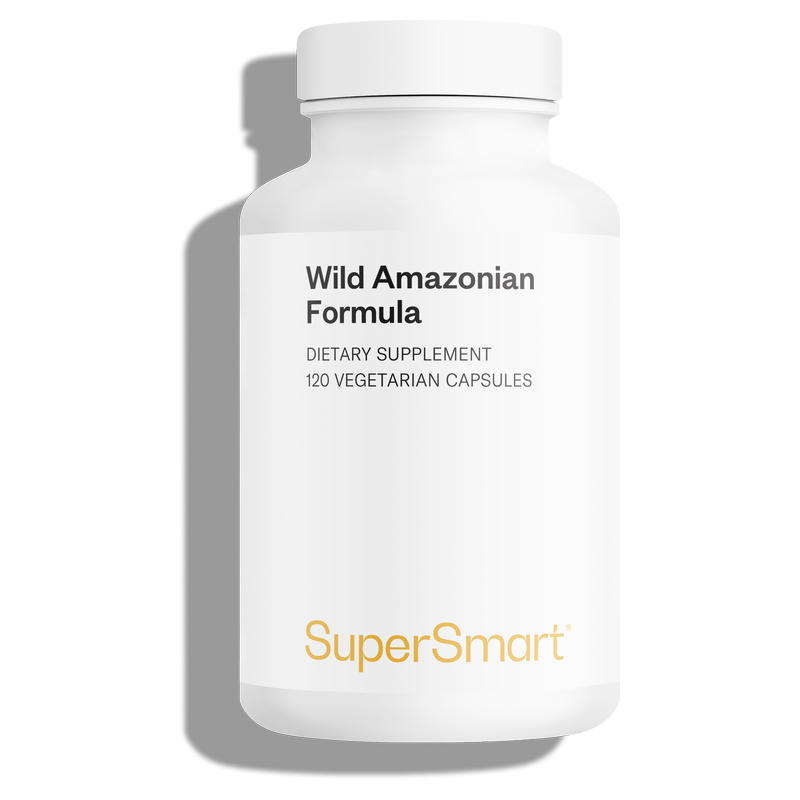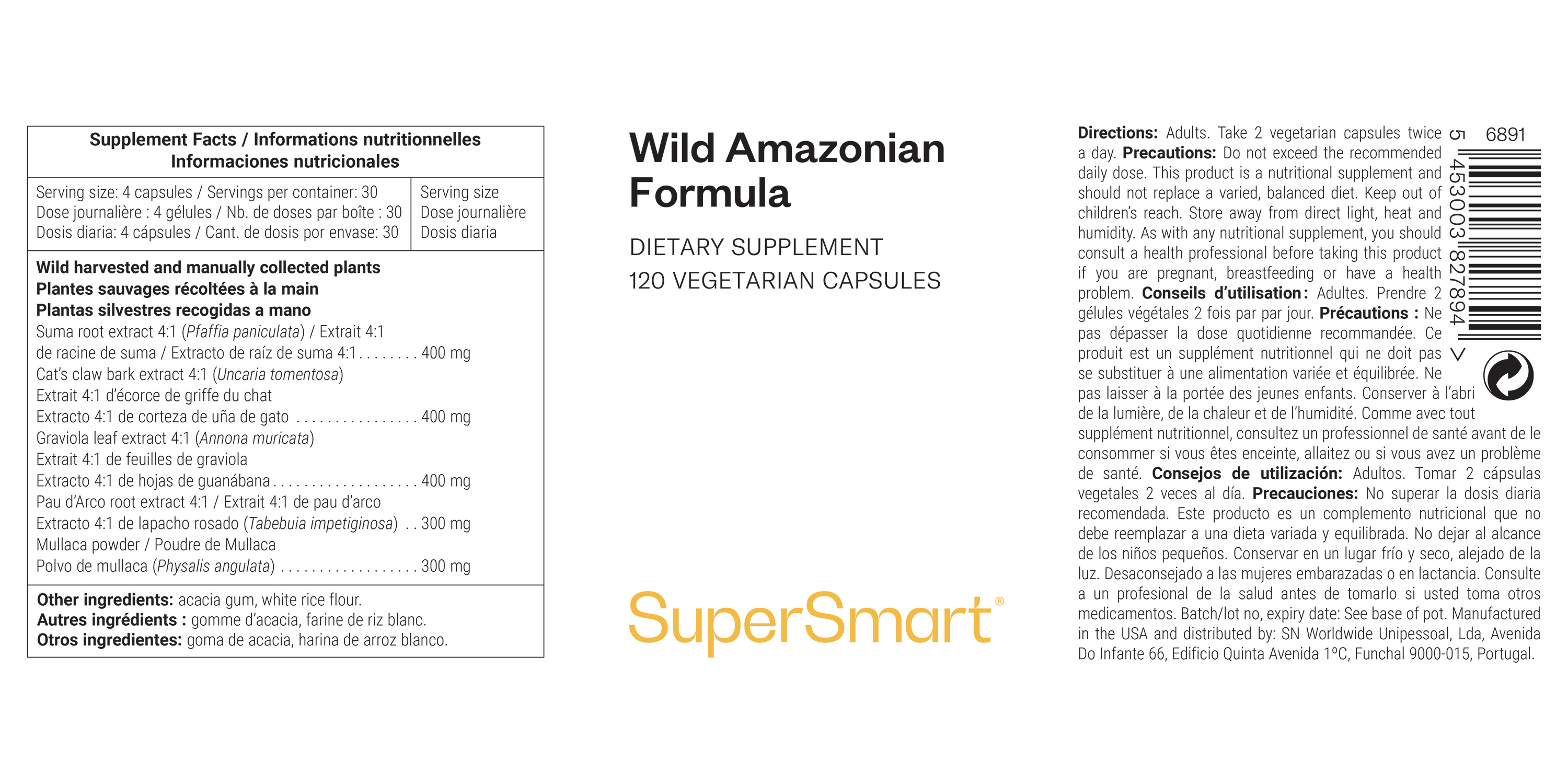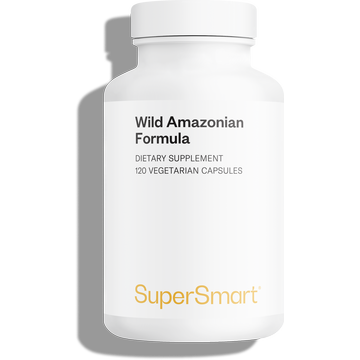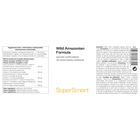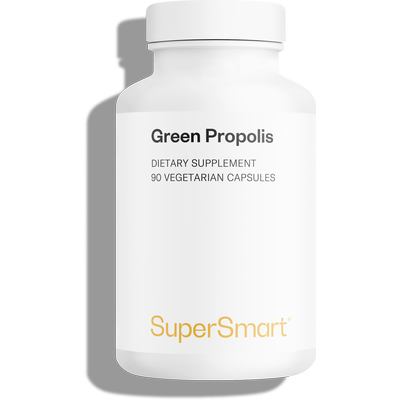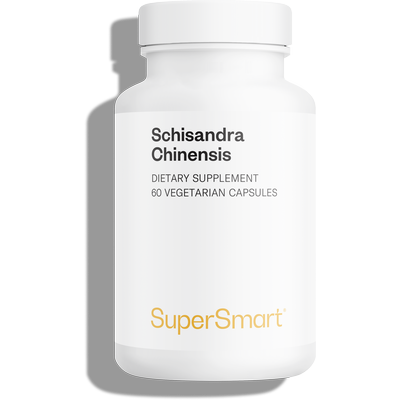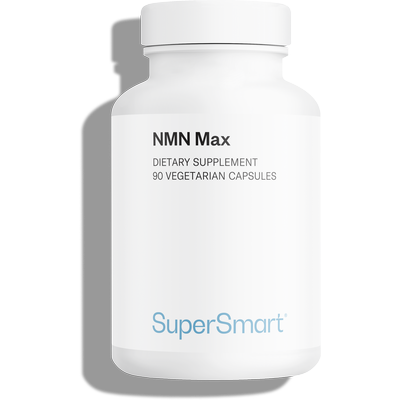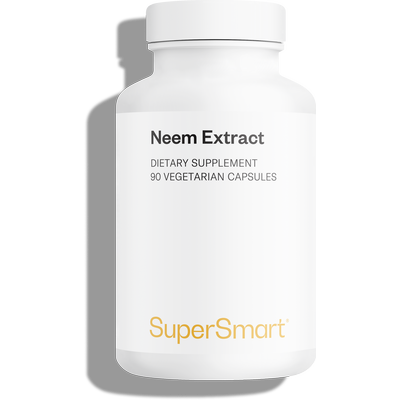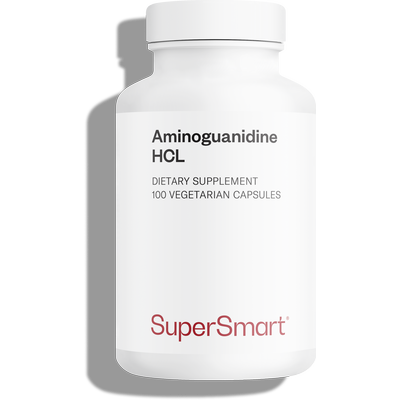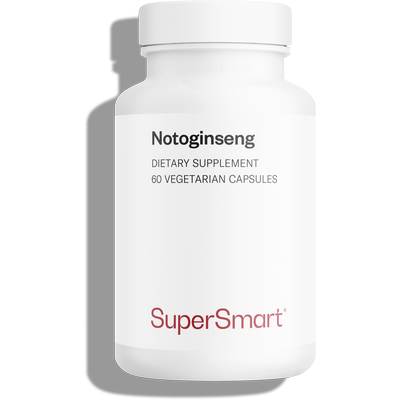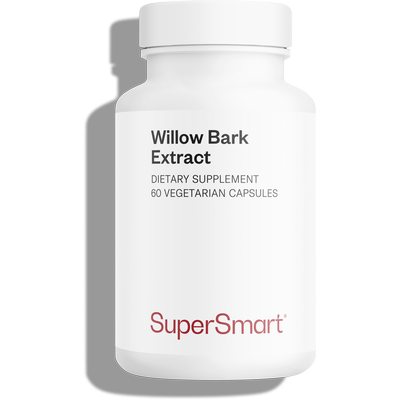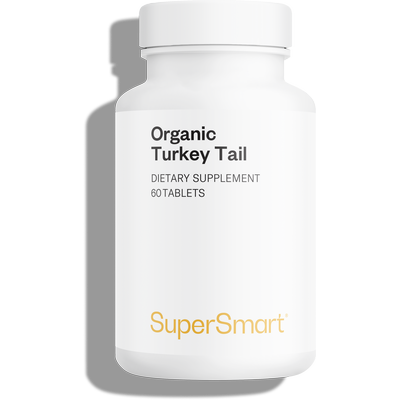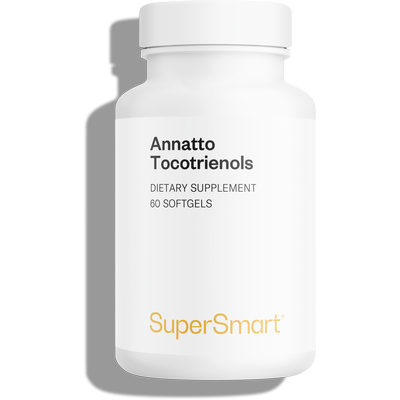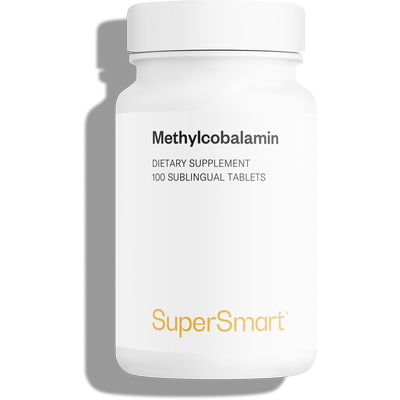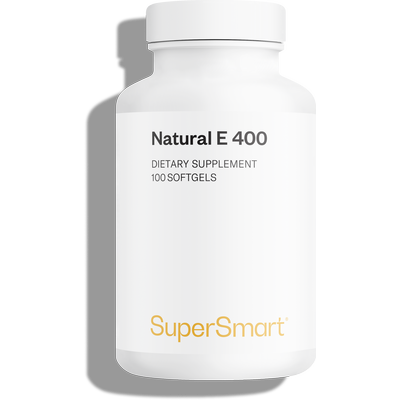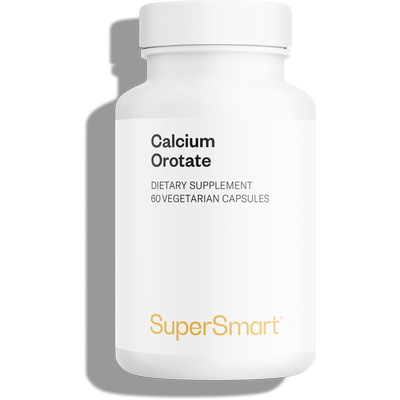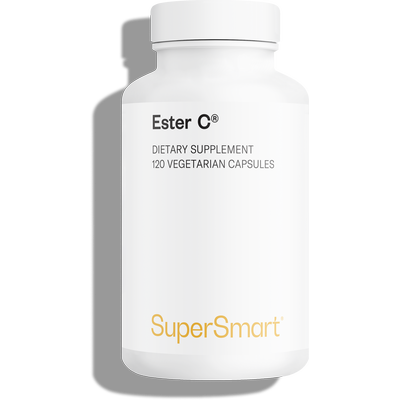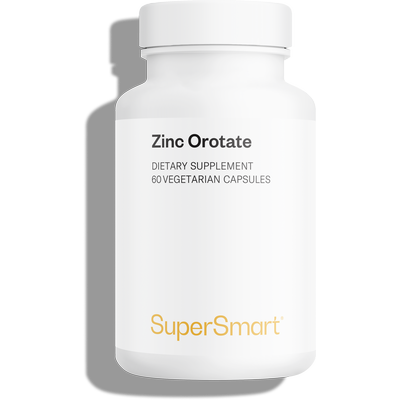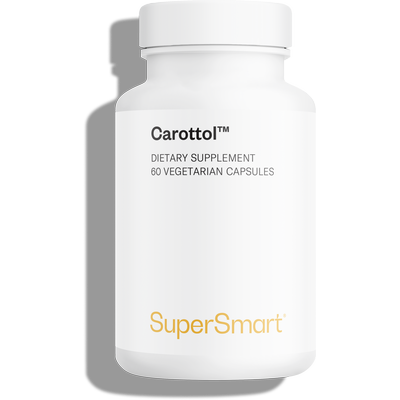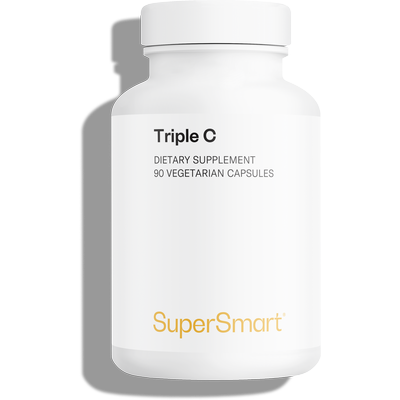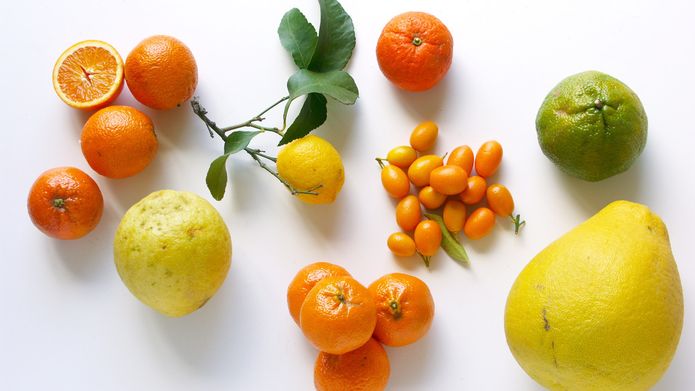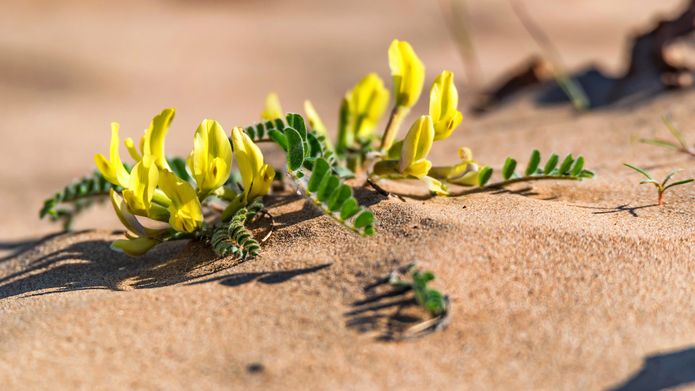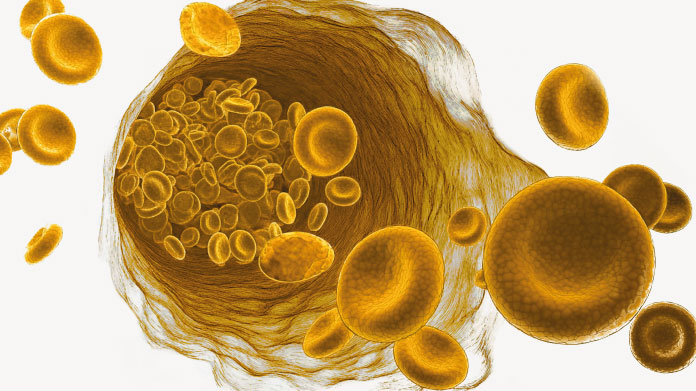Complete your selection
Wild Amazonian Formula is a clever mix of five wild plants from the Amazon designed to stimulate the immune system and develop the body’s ability to self-heal. Each of these medicinal plants has been carefully selected for its immune-stimulant and anti-proliferative properties. They are all hand-picked from the open-air botanical garden that is the Amazon rainforest.
Who is Wild Amazonian Formula aimed at?
This exceptional formulation is primarily for people aged over 50. These individuals’ immune systems are generally weaker and slower to respond to infections and abnormal cellular events than those of younger people.
It is equally suitable for people whose health has been compromised by adverse factors such as diabetes, cardiovascular problems, chronic stress or chemotherapy, as well as anyone who wants to minimise their risk of all kinds of infection.
In short, these are the four benefits offered by our formula:
- It stimulates the immune system and optimises the body’s natural self-healing mechanisms.
- It increases its resistance to adverse influences.
- It produces a general tonic effect, especially following an illness or short-term health problem.
- It combats stress, infections, fatigue and inflammation.
What is in Wild Amazonian Formula?
The Amazon rainforest is an extraordinary source of rare plant species which possess amazing therapeutic properties. SuperSmart has carefully selected the best of them to produce an unprecedented synergistic formula. Three criteria have been applied in making our selection: the plants’ empirical use, their clear, scientifically demonstrated physiological effects, and their synergistic power.
- Cat’s claw (Uncaria Tomentosa). This is a creeper native to the Amazon basin, much-prized by the indigenous population for its immune-stimulant properties and popularised as a result of the many studies conducted on it in recent years. It plays an important role in regulating programmed cell death, the process which makes abnormal cells ‘commit suicide’. It is its high content of sterol compounds (beta-sitosterol, stigmasterol, campesterol), tannins and procyanidins that’s probably responsible for these well-documented properties. Cat’s claw also helps improve immune response, fight inflammation, boost the antioxidant system and repair damaged DNA (1-4). One clinical trial of 12 healthy subjects demonstrated its protective effect against mutations to DNA (5).
- Suma root (Pfaffia paniculata). Also known as ‘Brazilian ginseng’, suma is an adaptogen plant from the Amazon basin. It has long been used by Olympic athletes to help build muscle and boost endurance, without the unwelcome side-effects of steroids. This effect is primarily linked to its high beta-ecdysterone content, though it also contains saponins, glycosides and other compounds which enable it to slow down the proliferation of abnormal cells and generally optimise the immune system (6-8).
- Inner bark of Lapacho (Pau d’arco). Lapacho has traditionally been used to fight infection of all kinds and to combat abnormal cell processes. Today, it is popular with Brazilians for fighting infections of the respiratory tract and skin, gastroenteritis, and cystitis. Scientists have identified two active ingredients responsible for these positive effects on cellular health and anti-proliferative properties: lapachol and beta-lapachone. They are both powerful, natural anti-inflammatories but lapacho’s efficacy is due more to the synergy created between all its compounds (9-13).
- Graviola leaves (corossolier). This is a tropical Amazonian plant used in traditional medicine for its anti-proliferative properties. A number of studies (14-17) have shown that graviola is associated with optimising mechanisms that stem the development of abnormal cell processes: inducing programmed cell death, selective inhibition, regulating receptors of growth factors … It is the plant’s high alkaloid content, particularly reticulin and coreximine, which is responsible for this exceptional property. Graviola offers other benefits too: it contains enzymatic antioxidants such as catalase and superoxide dismutase, both of which combat oxidative stress …
- Mullaca (Physallis angluata). In folk-medicine, this is used to treat various problems such as rheumatism and malaria. But this Amazon ground-cherry offers much more besides: researchers have demonstrated its ability to inhibit the growth of various abnormal cells, combat inflammation and positively modulate the immune response. In this case, it’s the plant’s richness in physalins – natural steroids with powerful anti-proliferative effects – that’s responsible (18). It also contains phytosterols that have antioxidant properties and positive effects on cardiovascular health.
What effects can you expect to see from taking Wild Amazonian Formula?
The natural plant extracts in Wild Amazonian Formula are well-known to tribes of the Amazon rainforest, particularly the Ashaninka and Campo who believe they affect both mind and body. They have been used in Amazonia for thousands of years. Given that traditional medicine rarely ‘gets it wrong’, thousands of researchers have endeavoured to scientifically test the virtues attributed to these plants. With a certain amount of success: the anti-inflammatory, immune-stimulant and anti-proliferative properties of these plants have indeed been demonstrated and explained in a laboratory setting.
Well-managed combination of these plants can help ward off infections and relieve problems often held in check by conventional medicine. It can, above all, help to stimulate the immune system through several distinct mechanisms:
- Protecting cells against oxidants known to damage cell organelles, membranes and DNA.
- Disrupting replication of viruses and thus preventing their progress within the body.
- Stimulating the interleukin-1 group of cytokines which facilitate transmission of white cells to infection sites.
- Fighting inflammation by inhibiting the production of ‘pro-inflammatory’ prostaglandins and suppressing the activity of TNF, a cytokine involved in chronic inflammation.
- Improving cell oxygenation.
- Repairing errors and mutations to DNA.
- Slowing down or inhibiting abnormal cell proliferation.
5 good reasons to start a course of Wild Amazonian Formula now
- The plants selected are all wild-growing species and are hand-picked. They are therefore much more active than their cultivated equivalents (because they’re subject to different natural stresses) and are completely uncontaminated by pesticides.
- Large-scale scientific studies support the use of the five plants contained in this formula.
- These plants have been used for thousands of years because of their high content of exceptional micronutrients.
- They all help stimulate the immune system and optimise the body’s natural self-healing mechanisms.
- With different mechanisms of action, they offer maximum synergy.
What is in Wild Amazonian Formula
Any questions?
Wild Amazonian Formula is not recommended for those suffering from auto-immune diseases because in these individuals, stimulating the immune system threatens, rather than protects, the body. In addition, some of the plants used, particularly mullaca, can produce a mild hypotensive and anti-coagulant effect.
To optimise supplementation, it’s advisable to follow the recommendations below:
- Make sure you get the right amount of sleep for your needs (7 hours a night is often the minimum required).
- Don’t smoke and try to use household products that contain a minimum of chemicals.
- Always wash your fruit and vegetables or make sure you choose organic varieties.
- Take regular, moderate exercise.
- Eat a healthy diet, prioritising immune-stimulant foods such as mushrooms, garlic, onions and shallots.
Wild Amazonian Formula can be combined with other supplements available to buy at Supersmart such as Reishi extract or Adaptix to maximise its effects on immunity.
To prevent winter infections, it’s best to begin a six-month course of supplementation in the autumn. In all other cases, it can be continued for longer.
Buy Wild Amazonian Formula capsules to fight infection and boost the immune system.
This product’s capsules are composed of HPMC (hydroxypropyl methylcellulose), a plant substance derived from cellulose. HPMC is widely used for medicines and dietary supplements. It contains no animal ingredients, is recognised as safe by health authorities and is considered more sustainable than synthetic alternatives.
november 20 2024
Très bon produit, je l'utilise régulièrement pour l'immunité : quand je suis malade et cela diminue les symptômes, ou en prévention ou juste dès que je sens que je commence à attraper froid pour éviter que ça se déclare trop et cela marche très très bien!!
Very good product, I use it regularly for immunity: when I'm sick, it reduces the symptoms, or as a preventive measure, or just as soon as I feel like I'm starting to catch a cold to prevent it from developing too much, and it works very, very well!!
 see the translation
Translated by SuperSmart - see the original
see the translation
Translated by SuperSmart - see the original
june 10 2024
Je le prends en continu car m’aide pour le soutien immunitaire et fatigue.
I take it continuously because it helps with immune support and fatigue.
 see the translation
Translated by SuperSmart - see the original
see the translation
Translated by SuperSmart - see the original
april 5 2024
Bon produit pour aider le corps à se restaurer à la sortie de l’hiver.
Good product to help the body recover after winter.
 see the translation
Translated by SuperSmart - see the original
see the translation
Translated by SuperSmart - see the original
march 8 2024
Bon produit pour les défenses immunitaires, virus hivernaux et défenses du corps pour des problèmes divers.
Good product for immune defenses, winter viruses, and body defenses for various issues.
 see the translation
Translated by SuperSmart - see the original
see the translation
Translated by SuperSmart - see the original
february 1 2024
Bon produit, intéressant pour les défenses immunitaires.
Good product, beneficial for the immune system.
 see the translation
Translated by SuperSmart - see the original
see the translation
Translated by SuperSmart - see the original
Need help?
You may also like

